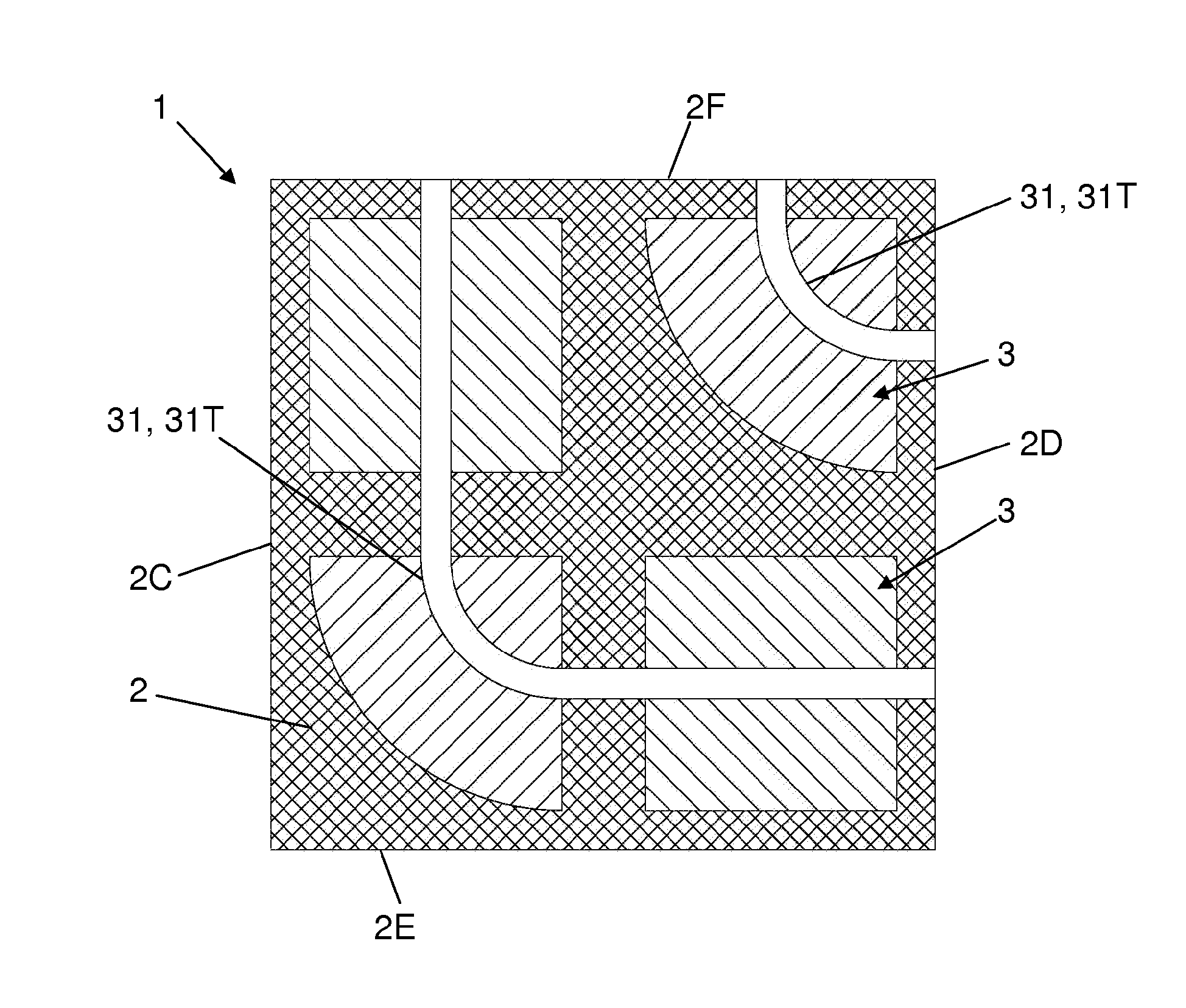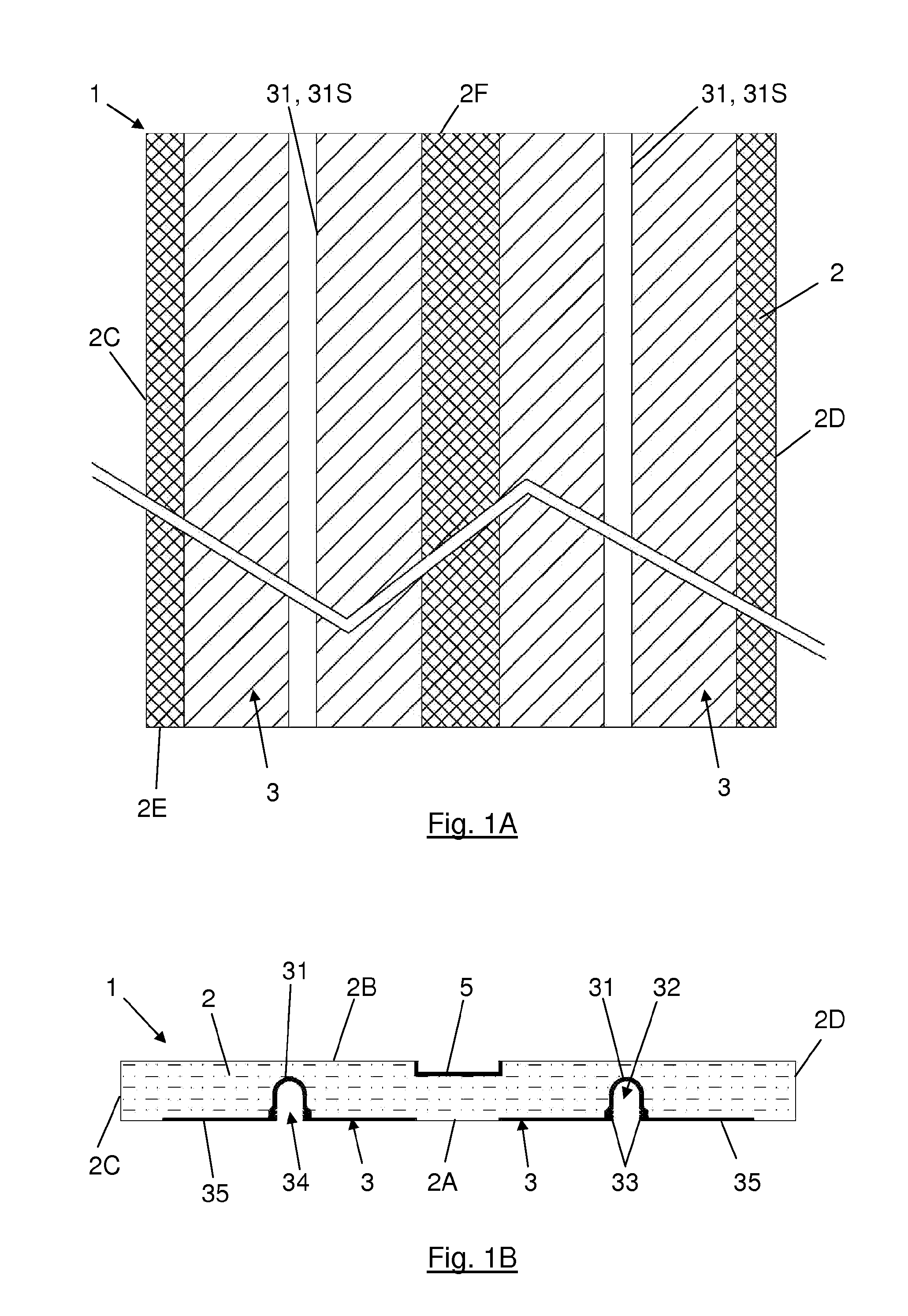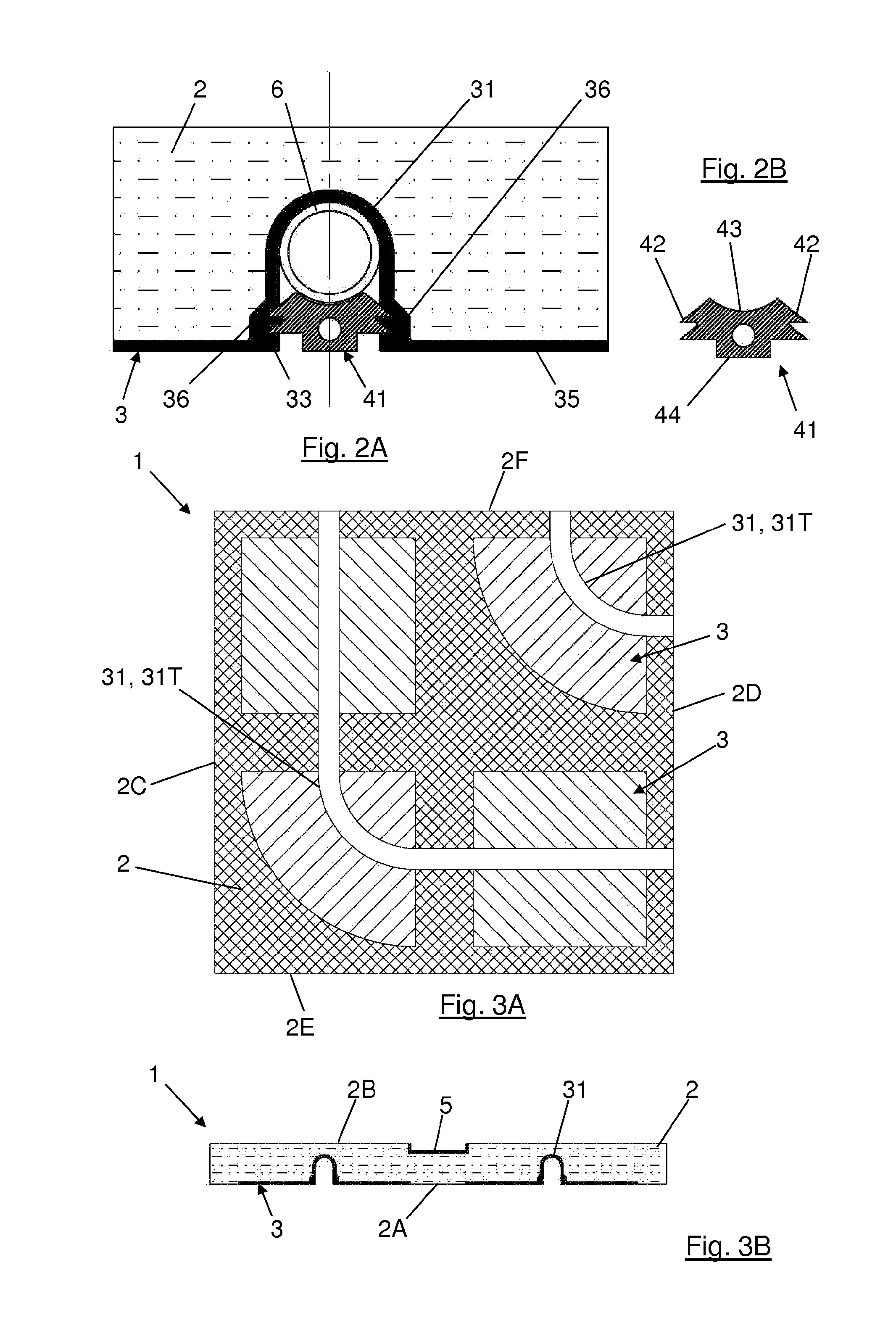Modular panel for thermal energy transfer
a module panel and thermal energy technology, applied in the direction of domestic heating details, space heating and ventilation details, sustainable buildings, etc., can solve the problems of limited power output of the panel, very little assembly flexibility, and affecting both the panel itself and the thermal surface, so as to prevent the formation of air pores, increase the durability of the installation, and ensure the mobility
- Summary
- Abstract
- Description
- Claims
- Application Information
AI Technical Summary
Benefits of technology
Problems solved by technology
Method used
Image
Examples
Embodiment Construction
[0013]According to a first object of the present invention a modular panel for thermal energy transfer particularly configured for being used in ceilings and walls is described below.
[0014]Said modular panel comprises a heat-insulating layer preferably having a square or rectangular base, forming a supporting structure demarcated by at least one lower face, an upper face, two side faces and two end faces. The materials which can be used to form the insulation layer are great in number and very diverse, such as for example synthetic polymer foams (such as polyisocyanurate, polyurethane, etc.), mineral wools and natural plant-based insulations, among others.
[0015]In turn, the panel also comprises at least one preferably aluminum conducting plate attached to the lower face of the heat-insulating layer. The conducting plate is likewise formed by:[0016]a groove embedded in the heat-insulating layer defining a longitudinal cavity which is configured to house a hydraulic pipe, said groove ...
PUM
| Property | Measurement | Unit |
|---|---|---|
| Angle | aaaaa | aaaaa |
| Angle | aaaaa | aaaaa |
| Temperature | aaaaa | aaaaa |
Abstract
Description
Claims
Application Information
 Login to View More
Login to View More - R&D
- Intellectual Property
- Life Sciences
- Materials
- Tech Scout
- Unparalleled Data Quality
- Higher Quality Content
- 60% Fewer Hallucinations
Browse by: Latest US Patents, China's latest patents, Technical Efficacy Thesaurus, Application Domain, Technology Topic, Popular Technical Reports.
© 2025 PatSnap. All rights reserved.Legal|Privacy policy|Modern Slavery Act Transparency Statement|Sitemap|About US| Contact US: help@patsnap.com



